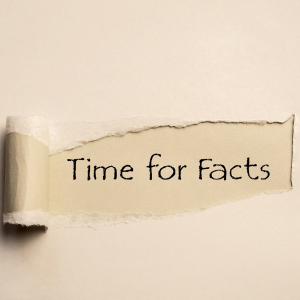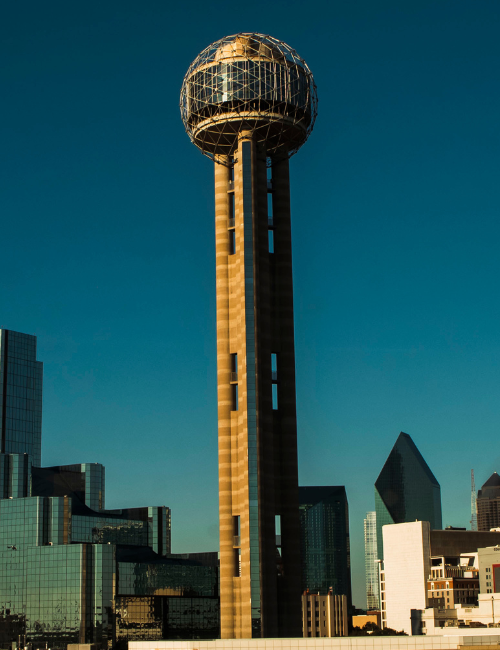
Discover the surprising and quirky side of Dallas, Texas with A Cash Home Buyer! From historic landmarks to hidden gems, these fun facts reveal what makes the Big D truly unique.
The Historical Origins of Dallas
Dallas, Texas, is a city steeped in history, its origins being rooted in the pioneer character. It was initially established as a trading post, but it quickly evolved into a bustling metropolis that played a significant role in the development of Texas. The history of this dynamic city is characterized by a distinctive cultural mélange and a landscape that has been influenced by alliances and rivalries. Explore the captivating narrative of Dallas’s establishment and the epic rivalry with Fort Worth that has contributed to the region’s identity. Discover unexpected historical facts that illuminate the essence of Dallas, Texas.
The Founding of Dallas: From Settlement to City
The history of how Dallas came to be is full of adventure and business. It all started with a small village in the early 1840s. It was set up by a trader from Arkansas named John Neely Bryan, who saw an opportunity in the Trinity River area. Bryan built a log cabin that became a trade post and quickly drew in other settlers.
This place was very important because it was near the Republic of Texas and on Native American roads, which made trade easier. The town grew, and in 1856, it was officially named the city of Dallas. As Dallas grew, it became a business center because it was in a good spot for moving things across Texas.
The building of railroads, which linked Dallas to bigger markets, was very good for it. When the Houston and Texas Central Railroad came through in the 1870s, it helped the city grow and made Dallas the most important business hub in northern Texas. The city’s growth from a small settlement to a busy metropolis shows how bold its founders were.
Dallas grew over the years, attracting new businesses from farming to high-tech innovation. This solidified its reputation as a city of progress and wealth. The story of how Dallas came to be is still an important part of the city’s character, representing strength and change. Dallas’s history is celebrated today with museums and historical sites that give visitors a look into the city’s long and interesting past. These places help tourists learn about Dallas’s rich heritage and its place in Texas history.
A Tale of Two Cities: Dallas and Fort Worth’s Historic Rivalry
The storied competition between Dallas and Fort Worth, frequently referred to as the “Tale of Two Cities,” holds a legendary place in the annals of Texas history. This rivalry, marked by a spirit of friendly competition and shared development, has profoundly shaped the cultural and economic landscape of the area.
The competition started in the late 19th century as both cities sought to establish themselves as the leading economic center in North Texas. Dallas, recognized for its early development as a trade hub, capitalized on its advantageous location and transportation connections to draw in businesses and industries. Fort Worth, on the other hand, established itself as the entry point to the west, leveraging its proximity to cattle ranching.
This strategic positioning resulted in the creation of the Fort Worth Stockyards, which emerged as a key center for cattle drives and livestock trading. The competition evolved significantly in the 20th century, influenced by the surge in sectors like aviation and oil. Dallas advanced in technology and finance, evolving into a vibrant urban center, while Fort Worth upheld its legacy of western culture and defense sectors.
In spite of the rivalry, the cities have joined forces on various initiatives, such as the development of DFW International Airport, showcasing their capacity to collaborate for the greater good of the region. Today, the lively rivalry persists, nurturing a distinct cultural identity for every city within the broader metro area.
This unique interplay allows both residents and visitors to immerse themselves in the lively juxtaposition of Dallas’s energetic urban scene and Fort Worth’s deep-rooted cowboy traditions. The rivalry not only showcases the contrasts between them but also uncovers the profound connections that intertwine their histories. This duality stands out as a captivating element of the Dallas-Fort Worth story, enhancing the cultural richness of Texas.
Cultural and Architectural Highlights

Dallas, Texas, has a landscape that combines cultural energy with architectural brilliance, creating a fascinating blend of modernism and history. The city’s skyline, created by renowned architects, exemplifies its inventive spirit, with structures by Pritzker Prize winners catching the eye. Meanwhile, Dallas’ vibrant Arts District reflects the city’s commitment to cultural enrichment, with a diverse range of museums, theaters, and galleries celebrating innovation. Together, these aspects showcase Dallas’ distinct appeal, making it a must-see destination for cultural and architectural fans alike.
Dallas’ Skyline: A Masterpiece by Pritzker Prize Winners
The Dallas skyline stands as more than just an array of towering structures; it represents a carefully crafted vision that highlights the harmonious blend of innovative architecture and forward-thinking urban development. The skyline features iconic structures crafted by renowned Pritzker Prize winners, creating a distinctive architectural landscape. The significant influence of these architects is clear in the city’s dedication to merging practicality with visual charm, resulting in a skyline that stands out as one of the most iconic in Texas.
The Bank of America Plaza, featuring its striking neon outline, stands as a focal point, attracting the city’s illumination into a cohesive display that captivates both locals and tourists. One of the standout structures shaping this skyline is the Margaret Hunt Hill Bridge, crafted by the renowned architect Santiago Calatrava. This remarkable structure serves not only as a passage over the Trinity River but also stands as a testament to the creative essence of Dallas.
In the meantime, the impressive Reunion Tower, a true architectural marvel, provides sweeping vistas of the city and exemplifies Dallas’s ambition to blend elegance with bold design. These structures transcend their physical form, serving as cultural expressions that embody the evolution and aspirations of the city. The architectural landscape of Dallas has transformed from its beginnings as a trading post into a vibrant city filled with skyscrapers that represent economic strength and cultural growth.
The impact of renowned architects has reshaped the skyline into a vibrant showcase, stirring feelings of inspiration and wonder. The city remains a magnet for global interest, enticing enthusiasts eager to discover these breathtaking instances of contemporary design, where each angle and exterior tells a distinct story of Dallas’s rich history and vibrant future.
The Vibrant Arts District in Dallas
The Dallas Arts District is a lively hub for cultural and artistic expression. It covers 19 blocks and is the largest urban arts area in the US. Dallas is a cultural beacon in Texas since it has a wide range of visual, performing, and creative arts. The Dallas Museum of Art and the Crow Collection of Asian Art are two of the most important cultural organizations in the district. Both offer interesting looks at different forms of art from around the world.
Dallas is very dedicated to the arts, and the Winspear Opera House is a great illustration of this. Foster + Partners designed this modern opera theater, which is famous not just for how beautiful it is but also for how well it sounds. People from all over the world come to act and watch. The Margo and Bill Winspear Opera House is a symbol of Dallas’s dedication to the performing arts. It hosts both classic and modern productions.
The Meyerson Symphony Center, constructed by the famous architect I.M. Pei, also adds to the architectural appeal of the Arts District with its otherworldly design and reputation for having great acoustics. The Nasher Art Center adds to this by having a stunning indoor and outdoor space that houses an exceptional collection of modern and contemporary art.
The Dallas Arts District is a living, changing example of how dedicated the city is to improving its cultural scene. It’s a friendly place where visitors can experience the innovation that makes Dallas unique, from new theater plays to cutting-edge visual arts. This one-of-a-kind neighborhood is an important element of Dallas’s lively community because it can celebrate cultural variety while encouraging artists to work together. The arts thrive here, bringing people into a realm of creativity and inspiration that is far more than what you’d expect from a busy Texas city.
The Vibrant District in Dallas offers colorful murals, trendy cafés, and lively events. If you want to sell your home for cash in Dallas and nearby areas, this area provides both opportunity and convenience.
Sports and Entertainment in Dallas

Dallas, TX, is a thriving hub of sports and entertainment, with a diverse range of events and experiences for both locals and visitors. Dallas stands out as a lively sports metropolis, with landmark stadiums hosting dramatic game-day events and a major role in crafting the Super Bowl experience. The city is home to the famed Dallas Cowboys, a football club known for its success and fan participation. Dive into how Dallas’ stadiums provide the perfect game-day atmosphere, as well as the particular influence Dallas has had on the Super Bowl, which has become an unmistakable part of the city’s identity.
Get the Ultimate Game-Day Experience in Dallas’ Stadiums
Dallas is known for its sports and entertainment, and its state-of-the-art stadiums guarantee a spectacular game-day experience. The AT&T Stadium, where the Dallas Cowboys, often known as “America’s Team,” play, is at the center of this. This stadium is not just a place to watch football; it is also a modern architectural and technological wonder. The stadium can hold more than 100,000 people, and it has an ambiance that is unlike any other. It changes the way people watch live games. People call it one of the biggest domed stadiums in the world. Its retractable roof and huge high-definition television screen make game day even more exciting, making it the best place for spectators who want to see how intense Dallas sports can be.
The American Airlines Center is just as important as the huge AT&T Stadium when it comes to sports and entertainment in Dallas. The Dallas Mavericks and the Dallas Stars play there. The facility has state-of-the-art sound and video equipment and offers exciting basketball and hockey games. These places show how serious Dallas is about giving people great sports enjoyment. On game day, the streets are alive with excitement as people head to Victory Park, a lively place that makes the pre- and post-game celebrations even better with its restaurants, bars, and interactive entertainment.
Dallas’ stadiums are home to a wide range of supporters, from those who like mainstream sports to those who have more esoteric interests. Each event becomes a cultural experience that goes beyond the game itself. The fact that sports have become a multi-faceted entertainment experience is one of the things that makes Dallas so appealing. It adds another layer of excitement to the city’s lively scene. For sports fans, going to a game in Dallas is more than just a chance to shout for your team. It’s also an opportunity to see the city’s energy, sense of community, and enjoyment of exciting entertainment all at once.
At A Cash Home Buyer, we buy houses in Houston and the surrounding areas, offering a fast and hassle-free selling experience.
The Dallas Influence on the Super Bowl Experience
Dallas, TX, has a big impact on the Super Bowl because of its strong sports culture and the city’s spirit of invention. The Dallas Cowboys are one of the most successful and well-known teams in NFL history. They have been a big part of making the Super Bowl experience popular all throughout the country. The Cowboys are known for their famous blue star and winning history. They have become a big part of Super Sunday and have helped make the event more exciting and fun. The city’s contributions to the Super Bowl go beyond just its NFL club; they also include the infrastructure that makes this huge event possible.
With its state-of-the-art amenities and cutting-edge technology, AT&T Stadium set new norms for the Super Bowl XLV in 2011. This event showed that Dallas could stage world-class sporting events, which helped the Super Bowl’s presentation and experience change throughout time. It changed what fans and viewers around the world might expect from the most-watched TV show by adding things like high-tech screens and unique ways for people to get involved.
Dallas has an impact on the Super Bowl that goes beyond sports. In the entertainment and hospitality industries, Dallas is known for providing a smooth, high-quality experience. The city’s many high-end hotels that can host large groups of guests and its famous restaurants that provide classic Texan food are just two examples of how the visitor experience is designed to match the Super Bowl’s importance. The combination of Dallas’s sports culture and lively entertainment options makes it the perfect place to celebrate the Super Bowl, which is more than just a sporting event; it’s a cultural event.
In the end, Dallas’s importance goes beyond its physical contribution to the Super Bowl. It reflects a spirit of invention and a love of competitiveness that makes the game-day experience better. Dallas is an important part of the evolution of America’s greatest sporting tradition because it sends a strong message of excellence and fun in every way it participates in sports. Whether you’re watching the Cowboys play or taking part in the exciting events the city has to offer, Dallas is a great place to be.
Unique Attractions in Dallas

Dallas, TX, has one-of-a-kind attractions that show off its many sides. The famous Dallas Zoo and a busy calendar of huge events that draw tourists all year round are just two of the many things to do there. The city’s attractions make it even more interesting, so tourists can fully experience Dallas’s vibrant diversity and find out what makes this place so special. Visit the Dallas Zoo to see the amazing variety of animals and fun things to do. You’ll understand why huge events are always popular with tourists, just as any historical or cultural milestone that makes Dallas more appealing.
Exploring the Diversity of the Dallas Zoo
The Dallas Zoo is not just a location to see animals; it is also a vibrant center of biodiversity that wants to teach and inspire people to protect nature. It was founded in 1888 and is now Texas’s largest and oldest zoo, with over 106 acres of carefully cared-for ecosystems. As you walk through the zoo, you’ll see more than 2,000 animals from about 400 different kinds. This makes it a must-see destination in Dallas. The fact that there are so many different kinds of animals at the zoo shows how much they care about protecting them and promoting diversity. Visitors can see African elephants and giraffes living together in a habitat that looks like their native habitat in displays like the Giants of the Savannah.
The Wilds of Africa exhibit, which has won several awards, takes you on an interactive trip into the heart of one of the world’s most biodiverse ecosystems. Guests can walk around the area and see gorillas, cheetahs, and lions while learning about their responsibilities in the wild and the problems they confront. At the same time, the Lacerte Family Children’s Zoo is a great place for kids to learn about sustainability and have fun with hands-on activities. The Dallas Zoo is an important part of education in Texas because it encourages people to be curious about animals and the environment. This helps visitors feel responsible for protecting the Earth.
Also, the Dallas Zoo has fun activities all year long that draw in both locals and tourists. The Dallas Zoo has a lot to offer besides just looking at animals. For example, they have Zoobilee with its light displays, conservation talks, and behind-the-scenes tours. These activities and exhibits show how the zoo is a leader in studying animals and getting people involved, which is part of its aim to promote the idea of “one earth, one future.” The zoo is a great place to go in Dallas. It’s a pleasant and educational place where you can learn and have fun at the same time.
Discover the wonders of Dallas through our one-of-a-kind attractions! Dive into interactive exhibits where learning becomes an unforgettable adventure. For more help, Contact Us at A Cash Home Buyer.
Why the Big Events in the City Attract Tourists Year-Round
Dallas is a busy city known for staging big events that draw crowds and tourists all year round. Big Tex, the famous mascot of the State Fair of Texas, greets millions of visitors every fall. He represents the city’s distinctive mix of culture and festivity. The fair, which takes place every year in Fair Park, is one of the biggest of its kind in the US. It has exciting attractions, interesting exhibits, and classic Texan food that all show off the state’s lively character. This kind of festival environment is not only fun, but it also teaches people about Texas culture. That’s why it’s such an important event on Dallas’s annual calendar.
The city has more than just the State Fair. It also has arts and culture festivals, sporting events, and international exhibitions that show how active Dallas is. The Dallas International Film Festival, which takes place every year in the spring, brings filmmakers and movie fans from all over the world to the city, making it a center of cinematic creation. Meanwhile, major events like Dallas Cowboys football games and high-stakes Dallas Mavericks basketball games bring in fans from all over, making the city even more famous as a sports powerhouse. Tourists who want to experience the thrill of live sports along with the lively support from locals are especially drawn to these events.
Dallas is known for hosting enormous events, and it can do so in places like the Kay Bailey Hutchison Convention Center, which makes its reputation even stronger. The city’s infrastructure and hotel industry are ready for the flood of visitors during peak event periods. They offer great places to stay and a wide range of food alternatives that appeal to people from all over the world. This smooth combination of entertainment and hospitality shows why Dallas is still a popular tourist destination with attractions all year long. Every event in Dallas, whether it’s a cultural, sporting, or community event, tells a different element of the city’s story. Everyone is welcome to come and see and experience the city’s rich diversity.
The Wilds of Africa exhibit, which has won several awards, takes you on an interactive trip into the heart of one of the world’s most biodiverse ecosystems. Guests can walk around the area and see gorillas, cheetahs, and lions while learning about their responsibilities in the wild and the problems they confront. At the same time, the Lacerte Family Children’s Zoo is a great place for kids to learn about sustainability and have fun with hands-on activities. The Dallas Zoo is an important part of education in Texas because it encourages people to be curious about animals and the environment. This helps visitors feel responsible for protecting the Earth.
Also, the Dallas Zoo has fun activities all year long that draw in both locals and tourists. The Dallas Zoo has a lot to offer besides just looking at animals. For example, they have Zoobilee with its light displays, conservation talks, and behind-the-scenes tours. These activities and exhibits show how the zoo is a leader in studying animals and getting people involved, which is part of its aim to promote the idea of “one earth, one future.” The zoo is a great place to go in Dallas. It’s a pleasant and educational place where you can learn and have fun at the same time.
Want to sell your house fast? Forget costly repairs and hassles. A Cash Home Buyer buys homes as-is for cash and takes care of all the details. Get your no-obligation offer by calling (214) 617-1510 today.
FAQs:
What is the Historical Significance of Dallas, Texas?
Dallas is historically significant as it was founded as a trading post in the 1840s by John Neely Bryan. It rapidly evolved into a major economic center due to its strategic location and the establishment of railroads.
How Did the Dallas-Fort Worth Rivalry Shape the Region?
The Dallas-Fort Worth rivalry fostered economic and cultural development, pushing both cities to establish unique identities. Dallas innovated in technology and finance, while Fort Worth emphasized cattle trading and western culture.
What Makes the Dallas Skyline Noteworthy?
The Dallas skyline is recognized for featuring designs by renowned architects, including Pritzker Prize winners. Iconic structures like the Margaret Hunt Hill Bridge and the Reunion Tower contribute to its unique architectural tapestry.
What is Unique About the Dallas Arts District?
The Dallas Arts District is the largest urban arts district in the U.S., offering a vast array of cultural experiences. It includes prestigious institutions like the Dallas Museum of Art and the Winspear Opera House.
How Does Dallas Contribute to the Super Bowl Experience?
Dallas contributes to the Super Bowl with its world-class facilities, like the AT&T Stadium, offering advanced technology and capacity. The city’s vibrant sports culture and hospitality amplify the event experience.
Helpful Dallas Blog Articles

